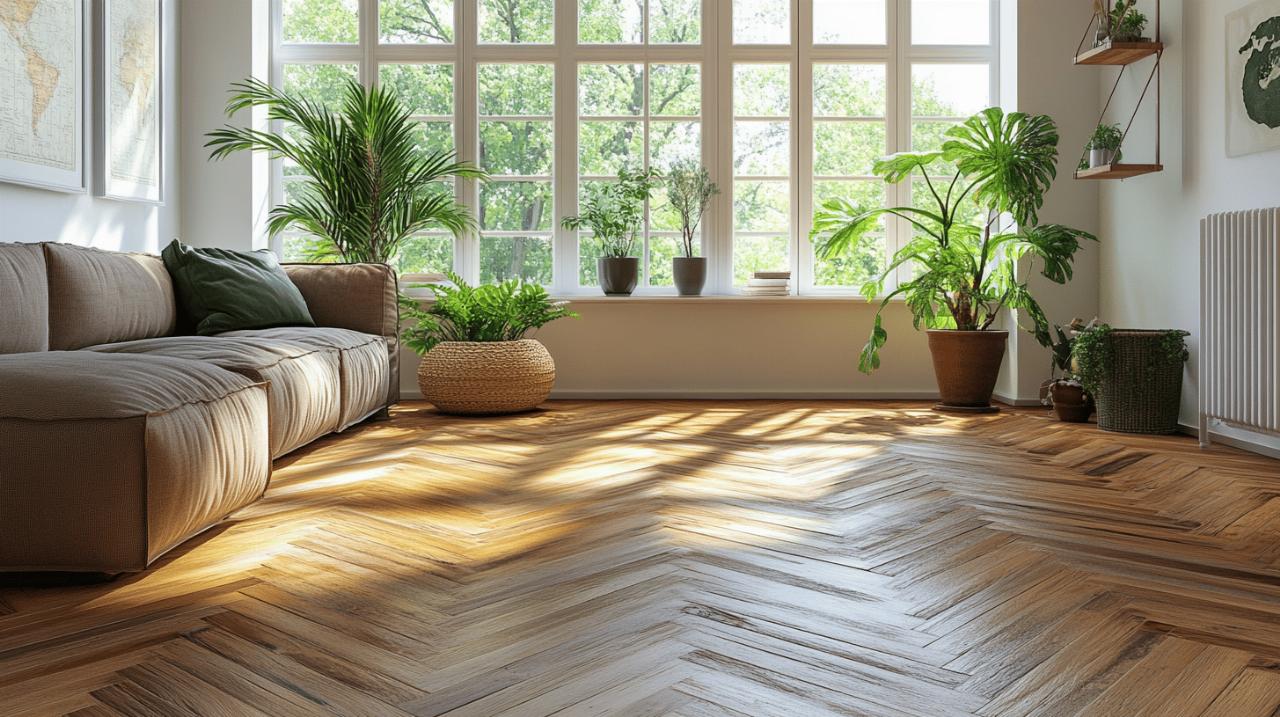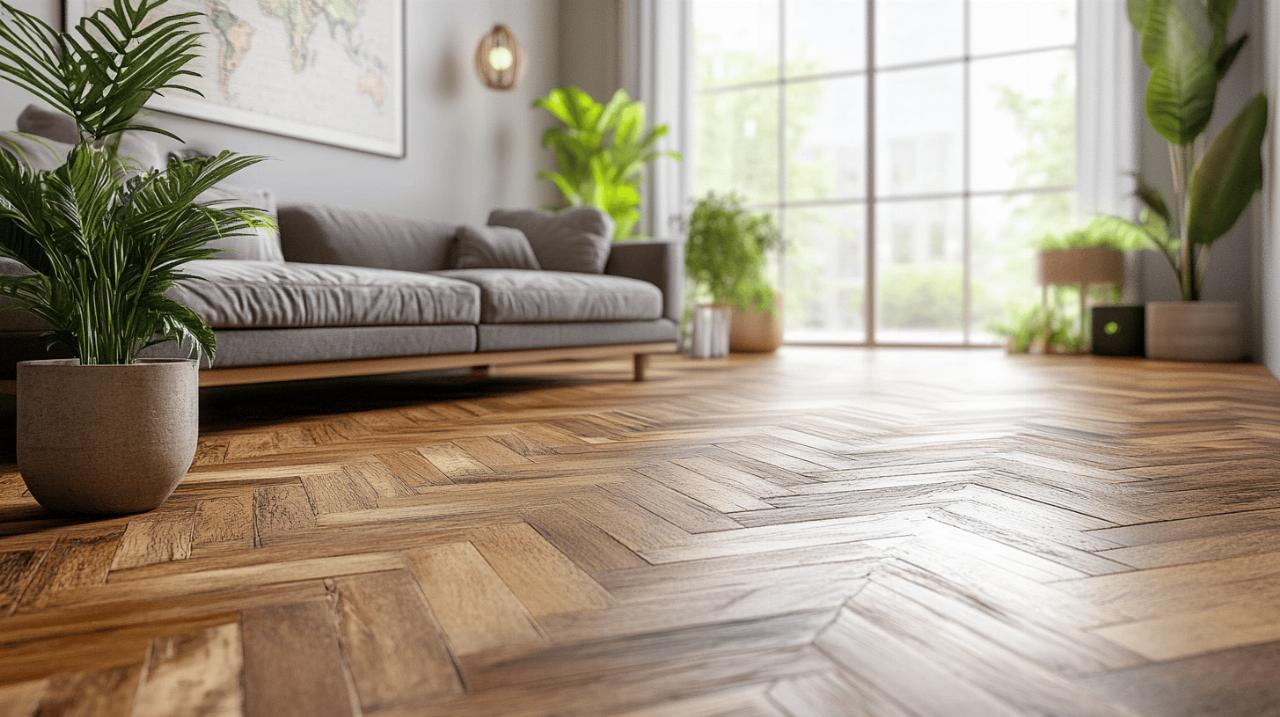Choosing the right parquet flooring orientation is an often overlooked aspect of sustainable home design that can significantly impact both the environmental footprint and aesthetic appeal of your living space. Beyond merely selecting eco-friendly materials, the strategic placement and direction of your flooring can enhance natural lighting, create visual space, and reduce waste—all contributing to a more sustainable home environment.
Maximising natural light with strategic parquet placement
Aligning flooring to optimise daylight flow
One of the most effective ways to create an eco-friendly home involves thoughtful consideration of how your parquet flooring interacts with natural light sources. According to experts at https://www.tiendasdedecoracion.es/ specializing in sustainable flooring, the orientation of wood flooring can significantly influence how daylight travels through your space. When installing parquet, align the boards parallel to the main light source, typically your largest windows. This orientation allows light to flow along the grain rather than being interrupted by perpendicular seams, effectively bouncing natural light deeper into your room.
Reducing energy consumption through brightness enhancement
Strategic parquet orientation serves as a passive energy-saving technique. By maximising natural light penetration, you can substantially reduce dependency on artificial lighting during daylight hours. Light-coloured engineered wood or laminate flooring with a semi-gloss finish will further enhance this effect, reflecting up to 30% more light than darker alternatives. This thoughtful approach to flooring direction not only creates a brighter, more welcoming atmosphere but also contributes to lower electricity consumption and reduced carbon emissions over the lifetime of your home.
Creating visual spaciousness with directional installation
Parallel placement to elongate room dimensions
The direction of your sustainable flooring significantly impacts spatial perception. Installing parquet parallel to the longest wall creates a visual extension effect, making narrow rooms appear wider and more spacious. This optical illusion reduces the perceived need for larger living spaces, potentially decreasing the overall built footprint of homes. For herringbone patterns, aligning the points of the pattern to lead toward the longest dimension of the room maximises this space-enhancing effect while maintaining the distinctive character of parquet flooring.
Expanding small spaces with clever orientation techniques
In compact areas, diagonal parquet installation can create a remarkable sense of spaciousness. This technique works particularly well with chevron patterns, which can make small rooms appear up to 15% larger when installed at a 45-degree angle to the walls. By creating an illusion of expanded space, this approach may help homeowners feel satisfied with smaller, more energy-efficient living areas rather than seeking larger homes with bigger environmental footprints. Additionally, floating floor systems make this installation more adaptable and easier to repurpose in the future.
Defining living areas with perpendicular parquet
Doorway orientation for distinct room boundaries
In open-plan living spaces, parquet flooring installed perpendicular to doorways creates natural visual boundaries without physical barriers. This technique establishes distinct zones while maintaining the benefits of an open floor plan, including improved air circulation and shared natural lighting. The subtle transition signals movement from one functional area to another, enhancing the usability of multipurpose spaces without additional construction materials or energy-consuming features like sliding doors or partial walls.
Creating zoned spaces without physical barriers
Sustainable home design often embraces the concept of zoning—creating distinct functional areas within larger spaces. By changing the direction or pattern of parquet at threshold points, you can define different living zones without constructing additional walls. For instance, a basket weave pattern in dining areas transitioning to herringbone in living spaces creates clear functional boundaries while maintaining flow. This approach reduces the materials needed for internal walls and improves heating and cooling efficiency by allowing air to circulate freely throughout the home.
Highlighting sustainable features with focused patterns
Drawing attention to energy-efficient elements
Thoughtful parquet orientation can draw the eye toward key sustainable features in your home. Installing flooring patterns that point toward energy-efficient elements like passive solar windows or thermal mass walls emphasizes these important features. For example, chevron patterns can be oriented to direct visual flow toward south-facing windows that capture winter sunlight, subtly highlighting these eco-friendly design elements. This integration of flooring direction with sustainable architecture creates a cohesive design that celebrates rather than conceals energy-saving features.

Using parquet direction to frame natural focal points
The direction of your parquet flooring can create visual pathways leading to natural focal points in your home. Whether framing a view of your garden through floor-to-ceiling windows or highlighting a locally sourced stone fireplace, strategic orientation guides movement and attention. By emphasizing connections to nature and sustainable features, this approach reinforces biophilic design principles that have been shown to improve wellbeing while encouraging environmentally conscious living practices.
Minimising waste through thoughtful design selection
Calculating optimal layouts to reduce offcuts
Careful planning of parquet orientation can significantly reduce material waste during installation. Square rooms generally produce less waste when flooring is installed parallel to walls, while rectangular rooms may benefit from diagonal installations to minimize awkward cuts. Considering room dimensions in relation to standard parquet block sizes allows for calculating the most efficient layout. Experts recommend creating detailed floor plans that account for both aesthetic goals and material efficiency, potentially reducing waste by up to 20% compared to unplanned installations.
Planning installation patterns for material efficiency
Different parquet patterns vary significantly in their material efficiency. Herringbone and chevron patterns typically generate more waste than straight layouts due to their angular cuts. However, this can be mitigated by selecting engineered wood flooring with FSC certification, ensuring that even production waste is managed sustainably. When planning installation, consider how pattern choice affects not only aesthetics but also material utilization. Some manufacturers now offer pre-cut pattern kits specifically designed to minimize waste during installation of complex parquet designs.
Sourcing eco-conscious parquet materials
Selecting locally harvested timber options
The environmental impact of parquet flooring begins long before installation. Sourcing locally harvested timber significantly reduces transportation emissions and supports regional economies. Look for engineered wood flooring that combines sustainable surface veneers with responsibly sourced core materials. Products with low VOC finishes protect indoor air quality while maintaining the natural beauty of the wood. When selecting materials, consider the full lifecycle including eventual reclamation or recycling potential, favouring systems that can be easily disassembled and repurposed.
Supporting sustainable forestry practices
Beyond orientation, the sourcing of your parquet materials plays a crucial role in environmental impact. Always choose wood flooring certified by recognized organizations like FSC or PEFC, which ensure responsible forest management. These certifications guarantee that for every tree harvested, new ones are planted, maintaining forest biodiversity and carbon sequestration capabilities. Additionally, consider engineered wood options that use fast-growing species for core layers while preserving slow-growing hardwoods for thin surface veneers, maximizing the yield from precious timber resources while delivering the aesthetic benefits of traditional solid wood parquet.




